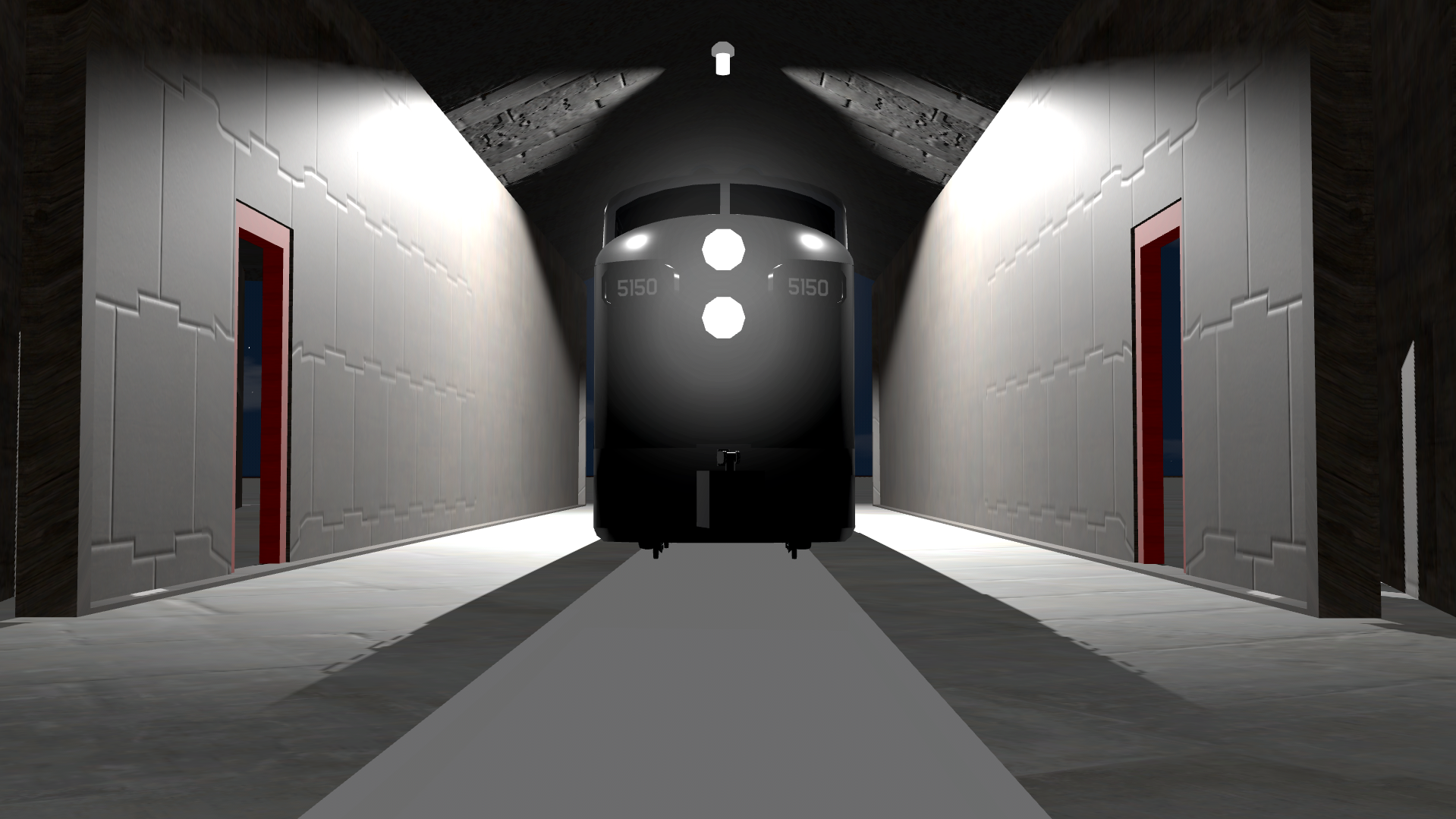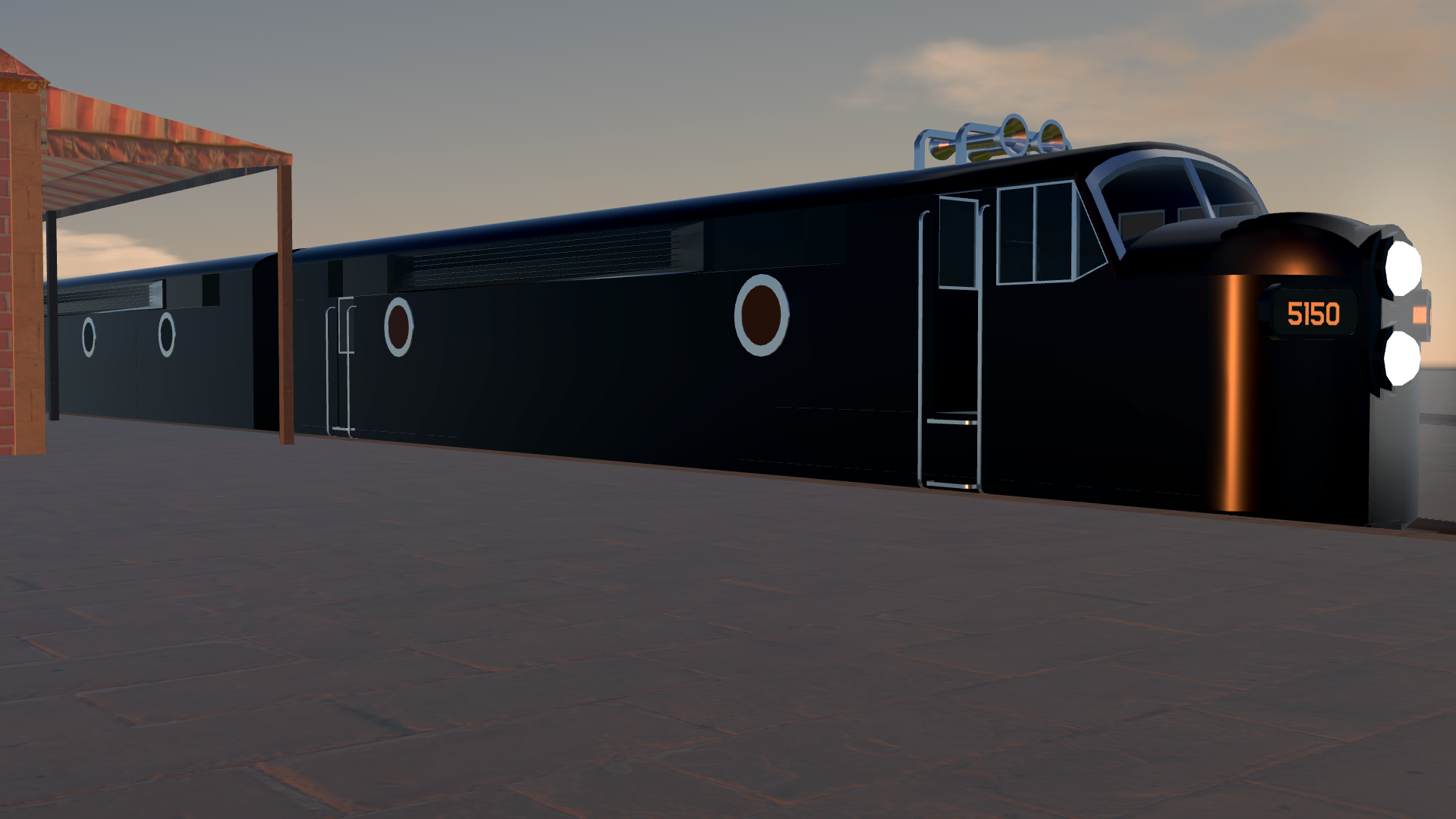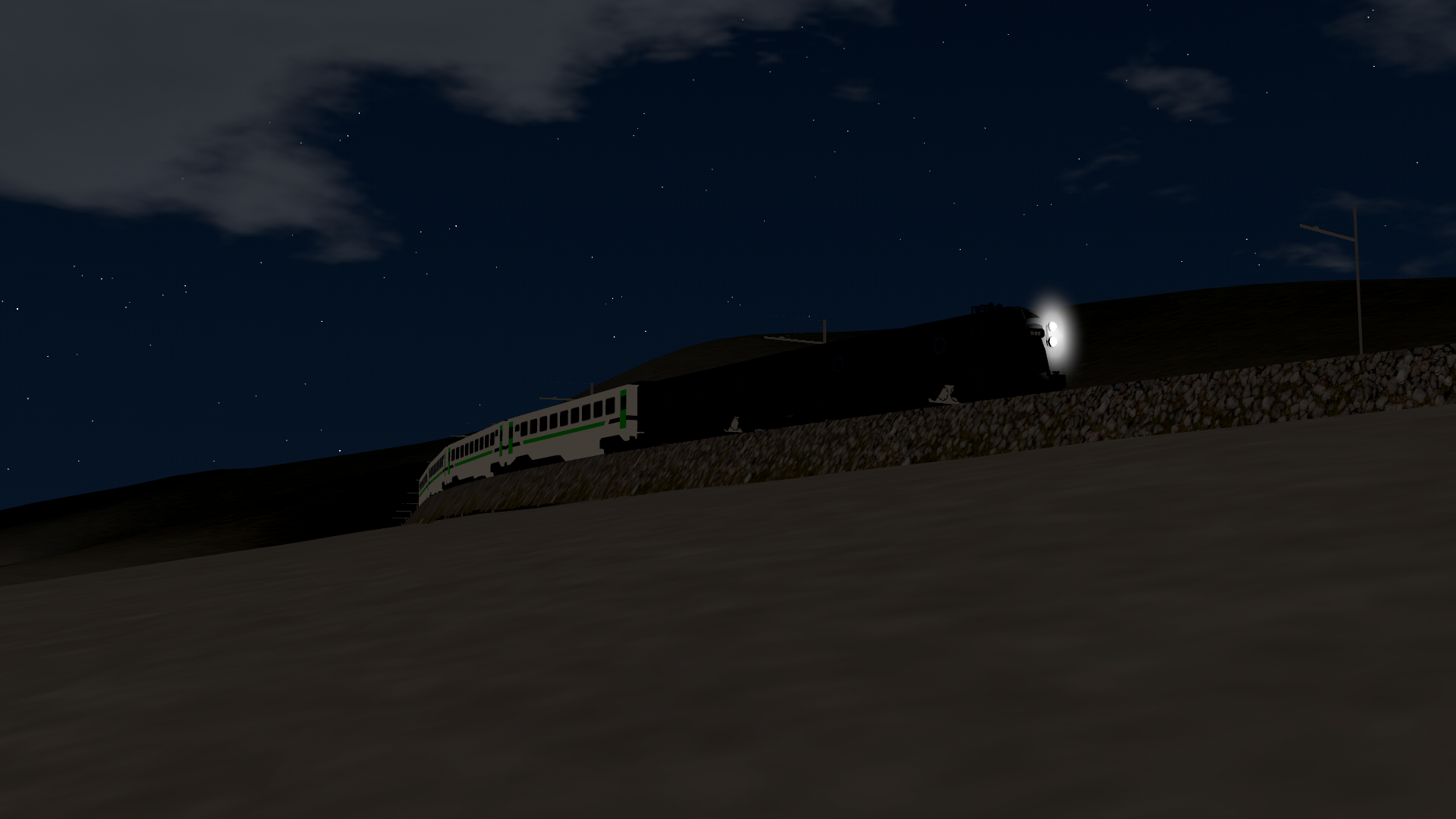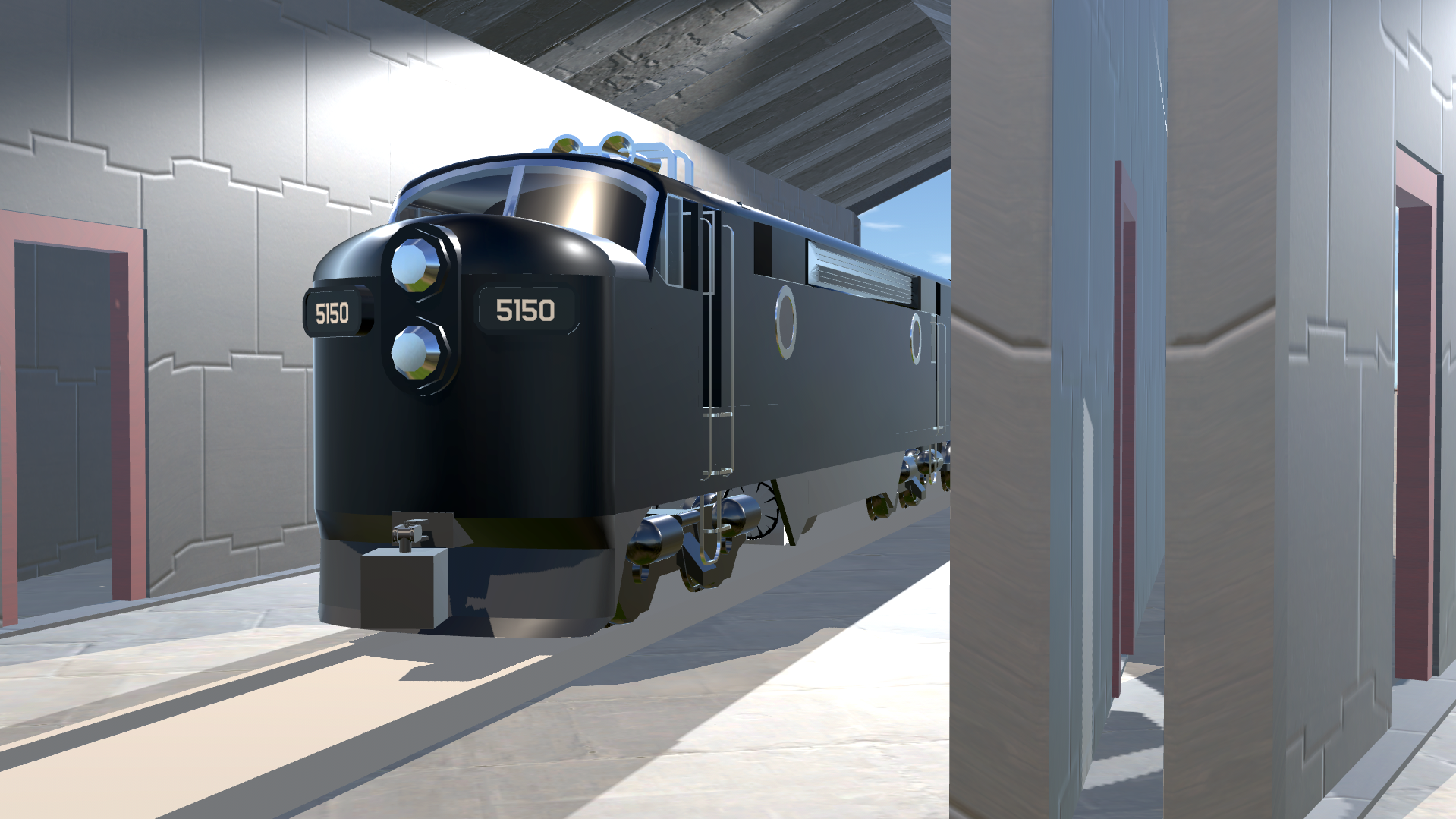HISTORY
from Wikipedia, the free "encyclopedia"
The F7 was the fourth model in GM-EMD's successful line of F-unit locomotives, and by far the best-selling cab unit of all time. In fact, more F7s were built than all other F-units combined. The F7 succeeded the F3 model in GM-EMD's F-unit series, and was replaced in turn by the F9. Final assembly was at GM-EMD's La Grange, Illinois, plant or GMD's London, Ontario, facility. There was no F4, -5 or -6 model; "7" was chosen to match the contemporary twin-engine E7, and was also applied to the new GP7 road-switcher.
The F7 differed from the F3 primarily in internal equipment—mostly electrical—and some external features. Its continuous tractive effort rating was 20 percent higher, e.g. 40,000 lbf (180 kN) for an F7 with 65 mph (105 km/h) gearing, compared to 32,500 lbf (145 kN) for an F3 with the same gearing.
Many F7s remained in service for decades, as railroads found them economical to operate and maintain. However, the locomotive was not very popular with yard crews who operated them in switching service because they were difficult to mount and dismount, and it was also nearly impossible for the engineer to see hand signals from a ground crew without leaning way outside the window. As most of these engines were bought and operated before two-way radio became standard on most American railroads, this was a major point of contention. In later years, with the advent of the "road switchers" such as the EMD GP7, F-units were primarily used in "through freight" and "unit train" service where there was little or no switching to be done.
CONTROLS
VTOL: Direction
Throttle: Throttle
AG1: Co Driver Door
AG2: Driver Door
AG3: headlight
AG4: Co Driver Side Lookout
AG5: Driver Side Lookout
GALERY

EMD F7

EMD F7 Preparing for Morning Service

EMD F7 during Night Passenger Service

EMD F7 in Maintenance Yard
RANT
Hello everyone. Yes new post already, yes im currently on overdrive lmao. Anyways, i created this train, the EMD F7, one of my favorite models of trains. They somehow have that aesthetic of a curvy and somewhat aerodynamic look to them, not something you see on American trains. I once fell in love with the unit when i played the flash game Rails of War, and saw the train in the menu. So here we are. Anyways, im now working on my thesis, rather slowly lol. Im also attending teaching internships so i hope everything goes well. Oh and i might go back to building ships soon. I think that'll be all for today, good night.
Specifications
Spotlights
- Ayanon 3 months ago
- DDVC 3 months ago
- ChihiroFujisaki 3 months ago
- Boeing727200F 3 months ago
- LJh2 3 months ago
General Characteristics
- Successors 5 airplane(s) +308 bonus
- Created On Windows
- Wingspan 9.0ft (2.7m)
- Length 109.0ft (33.2m)
- Height 14.3ft (4.4m)
- Empty Weight 51,316lbs (23,276kg)
- Loaded Weight 61,425lbs (27,862kg)
Performance
- Power/Weight Ratio 1.317
- Wing Loading N/A
- Wing Area 0.0ft2 (0.0m2)
- Drag Points 20633
Parts
- Number of Parts 483
- Control Surfaces 0
- Performance Cost 2,218





@Nitsu 👍
i claim Haysi Railroad No.1
nobody else can make it besides me.
Alright so who will convert this into an CF-7?
@Nitsu i struggle with spotting the differences too, the easiest way to tell them apart is the radiator mesh, they're different styles
@RailfanEthan wow that's interesting ngl. I always struggle to tell the difference between the different models. I was always reliant on Wikipedia for the history part since its a filler to give the post a little spice.
Fun facts! EMD did actually make F5s, they were F7 car bodies using F3 internals, they were built in the final months of the F3's production run when EMD's executives were starting to realize the F3 line had evolved so much since initial orders were taken. On catalogs and manuals, they were late model F3s, but within EMD's documents they were referenced as F5s.
Also, EMD offered them in quite a few different gear ratios for the traction motors. Santa Fe owned a fleet that were geared for over 100mph, which they reached daily in California.
Wow this so cool
@ayanon